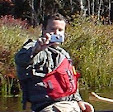I wanted to paddle today, but it was so hot that I also
wanted to be able to go swimming.
That meant that most of my usual haunts were out. I decided to go down to Lincoln Woods
to paddle Olney Pond.
I thought it would be quiet there today, but it was actually
pretty busy. Red and yellow rental boats dotted the pond. As I pulled into
the boat launch, a group of canoe racers with 5-man canoes was pulling in as
well. These boats came in pieces, and you could add or remove pieces depending on how many paddlers you had.
I paddled around the pond exploring the shoreline and the small coves and islands. There was
a small flock of cormorants, a heron, and lots of seagulls. I forgot how different it was to paddle
on a lake, even with a small breeze.
I took a swim at the start of the paddle, and at the end of
the paddle – it felt good.
Links:


















